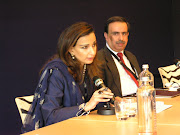AFTER
five years of policy paralysis under a dysfunctional coalition government,
India, with a newly elected leadership, promises to once again become a major
player in the Indo-Pacific region.
As
it does so, Australia is uniquely placed to become a key strategic and business
partner of India — if Canberra can reach out quickly to the new government.
Tony
Abbott must visit New Delhi as soon as possible and use the opportunity to sign
the nuclear safeguards agreement, negotiations for which are well advanced.
Signing
the agreement does more than just set the rules governing lucrative uranium
sales: it will symbolise the end of the years of mistrust that undermined
bilateral relations, and the arrival of a new era.
The
victory of the Bharatiya Janata Party and its prime ministerial candidate,
Narendra Modi, was so overwhelming because the party was challenging what was
perceived to be a weak, corrupt and increasingly directionless coalition led by
the Congress Party.
On
almost every economic indicator during the past few years, India has been doing
poorly: growth has stalled, investor confidence is eroded and the fiscal
deficit has increased because of poorly thought out, populist welfare schemes.
In
the past year, credit rating agency Standard & Poor’s has rated India
BBB-negative — just above junk.
Amid
this general stagnation, one of the few states to do exceptionally well has
been Gujarat, led by its four time-elected chief minister, Modi, who during the
next few days will be sworn in as prime minister of India.
At
the Vibrant Gujarat summit I attended last year at the state capital,
Gandhinagar, every captain of Indian industry, including Ratan Tata and the
Mukesh Ambani of Tata and Reliance, India’s two biggest companies, spoke of the
investor-friendly environment in Gujarat and the remarkable turnaround Modi had
brought to the state.
Despite
his decisive victory, Modi comes to his new office not without controversy.
Riots in 2002, in his early days as chief minister, continue to disconnect him
from a strong section of India’s liberal intelligentsia.
But
that negative legacy may turn out to be a positive: it is precisely why Modi
will seek to focus on the economy and demonstrate that he can deliver good
governance, rather than continue to pursue socially divisive issues that remain
a pro forma part of his party’s manifesto.
As
India begins to undertake path-breaking reforms under a newly decisive
leadership, it will open up new opportunities for the world. It is an
opportunity Canberra must seize.
The
long shadow of the Cold War, India’s autarkic economic policies and Canberra’s
decision not to transfer uranium to India, have kept the two countries apart
for several decades. But this is now history.
Today,
there are few countries in the region with which Australia has as much in
common, by way of values and interests, as India. Apart from being two
English-speaking, multicultural, federal democracies that believe in and
respect the rule of law, both have a strategic interest in ensuring a balance
in the Indo-Pacific and in ensuring that the region is not dominated by any one
hegemonic power.
It
is, however, the economic opportunities that the Modi government promises to
bring that could provide the cement to bind Australia and India closer
together. Two sectors stand out: mining and higher education, including
vocation educational and skills development. Both are at the centre of Modi’s
policy radar.
For
decades, the mining sector in India has been poorly governed and badly
regulated. According to a 2012 McKinsey report, India’s mining sector has the
potential to contribute $40 billion annually to government revenue and
create, directly or indirectly, an additional 2.3 million jobs.
As
the report points out, despite having the top five or six reserves globally in
many commodities such as iron ore and thermal coal, the mining industry is
small and contributes only 1.2 per cent of gross domestic product.
Modi
has emphasised that he wants urgently to reform the mining sector.
In
Australia, the end of the mining boom presents challenges in particular for the
mining services sector, and it could benefit from the opening up of India’s
mining sector.
The
Australia India Institute has recently set up a task force to explore the huge
win-win potential if Australia and India work together.
With
investment in mining falling in Australia as India’s need for investment,
technology and skills is growing more pressing, we could soon see Australian
mining services companies replacing local demand by working in India, and India
using Australian skills to unlock its mineral resources.
Similarly,
reform in higher education, particularly vocational education, is vital for the
Modi government as it attempts to realise the country’s so-called demographic
dividend from its 500 million young people aged under 25.
The
state of the higher education sector in particular is an abiding reminder of
the deadening effect of India’s planned economy up until 1990, the so-called
licence-permit Raj, which stunted India’s global ambitions.
The
previous government introduced several bills to reform the sector but, with
insufficient support and political will, all were stalled in parliament. The
Modi government will make sure these reforms are carried out.
This
will present an opportunity for Australian universities, which are faced
domestically with several challenges, to take advantage of the biggest market
in the world.
The
Australia-India relationship is clearly an idea whose time has come. But it can
only live up to its potential if Abbott starts planning his visit now.
(Source: The Australian)







No comments:
Post a Comment